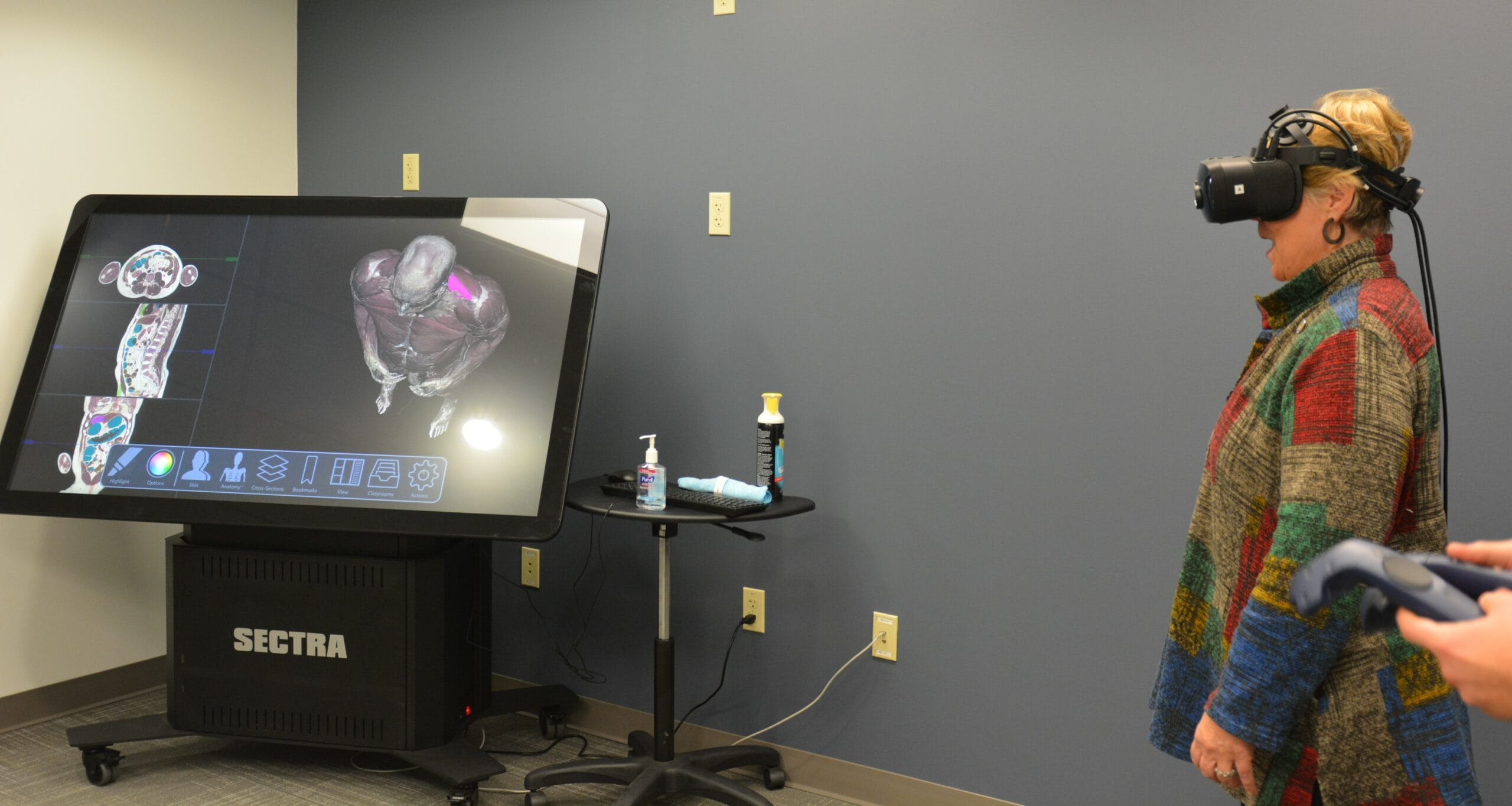State Legislators Visit UAMS Northwest Regional Campus
| A group of about 10 state legislators, as well as staff members from the offices of U.S. Rep. Steve Womack and U.S. Sen. John Boozman, toured the University of Arkansas for Medical Sciences (UAMS) Northwest Regional Campus in Fayetteville on Nov. 29, where they learned more about UAMS’s commitment to health care in Northwest Arkansas.
The lawmakers saw presentations on key UAMS priorities in the region, heard from students and toured the campus’s new SIM center and virtual reality equipment.
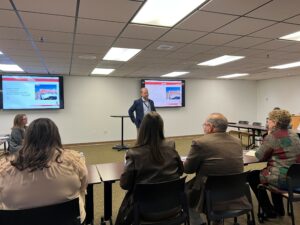
UAMS Vice Chancellor of Institutional Relations Andy Davis addresses a group of Arkansas State Legislators during their visit to the UAMS Northwest Regional Campus.
UAMS Vice Chancellor of Institutional Relations Andy Davis welcomed the legislators to the campus and thanked them for their commitment to UAMS and to the state of Arkansas. He mentioned that during his own time in the Arkansas General Assembly, he didn’t know much about UAMS, and he hoped that the meeting in Northwest Arkansas will help members of the legislature understand the important role UAMS plays in the region.
“We invited you here today so we can educate you on the broad scope of UAMS in Northwest Arkansas,” Davis said. “We hope that you leave here today with a better understanding of our reach, mission and footprint in Northwest Arkansas.”
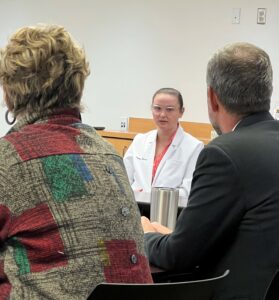
Holly Maness, a fourth-year College of Pharmacy student, answers legislators’ questions during the visit.
Holly Maness, a fourth-year pharmacy student, and Christian Goolsby, a third-year physical therapy student, then gave the group a student’s perspective of life on campus.
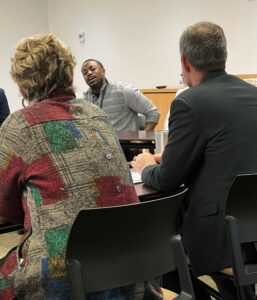
Christian Goolsby, a third-year physical therapy student, tells legislators about his experience as a student at UAMS Northwest.
Holly Maness, a native of Booneville, spoke about the excellence of her professors and the comradery of the pharmacy students on the campus. Goolsby, a native of Fort Worth, mentioned the unique “flipped classroom” method, in which students get recorded lectures in advance so they can come prepared to participate in the classroom. He also spoke of interacting with standardized patients and how the students get more practical experience than at most programs.
Amy Wenger, MHSA, vice chancellor of the UAMS Northwest Regional Campus, gave the group an overview of the regional campus, which was officially established in 2007, but that has roots back to 1973 when state legislation established Area Health Education Centers (AHECs) around the state. Wenger’s presentation expounded on how UAMS has a strong presence in Northwest Arkansas through all three of its mission areas: education, clinical and research.
The legislators asked numerous questions about the shortage of health care workers in the region and around the state and how to fill the staffing gaps that are occurring in all health care fields.
Parts of the solution, Wenger said, are already underway through UAMS’s new accelerated Bachelor of Science in Nursing program, its new three-year M.D. program for primary care fields, and partnerships with area hospitals to add more residency programs in Northwest Arkansas. Wenger, Davis and the legislators all agreed that more work needs to be done collectively and cooperatively to address the problem.
“This problem isn’t unique to Arkansas,” Wenger said. “There are health care workforce shortages all over the nation. Obviously, we can’t fix this problem overnight. But working together, we can find solutions that will bring more health care workers to Arkansas and keep them here.”
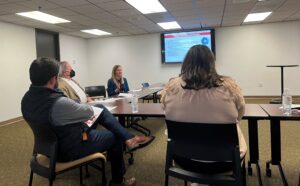
Krista Langston, executive director of community programs for the UAMS Office of Community Health & Research, gives an overview or her group’s efforts to the state legislators.
Next, Krista Langston, MBA, executive director of community programs for the UAMS Office of Community Health & Research, told the legislators how that office conducts research and works collaboratively with individuals, organizations and schools to identify, understand and address health inequities. Their outreach programs include healthy food systems partnerships with schools and food banks, maternal health programs, fatherhood programs, multiple food insecurity and equitable food systems programs, diabetes management programs, and programs to address food and health disparities in underserved populations.
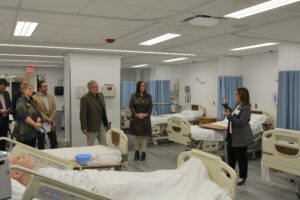
Amy Wenger, vice chancellor of the UAMS Northwest Regional Campus, shows state legislators the UAMS Northwest Campus’ 3,400-square-foot SIM center.
Afterward, the legislators toured the campus’s new SIM center, a 3,400-square-foot, 12-bed space that provides state-of-the-art training for students in all of the UAMS education programs in Northwest Arkansas. The simulation center supplements classroom learning and clinical education with the use of standardized patients, patient simulator manikins and other high-fidelity simulation that offers interactive, challenging learning experiences in a safe, nonthreatening environment for students.
Finally, the group visited the campus’ College of Medicine for a demonstration of the college’s 3D anatomy equipment, including a Toltec SECTRA dissection table and a state-of-the-art virtual reality system that provides a high-tech alternative to a traditional wet anatomy lab.
The UAMS Northwest Regional Campus includes more than 300 medical, pharmacy, nursing and health professions students, and 68 residents and fellows. The campus has a $58 million operating budget and manages 15 facility locations in the region, with clinics that include internal and family medicine, a student-led clinic, orthopaedics and sports medicine, behavioral health, and physical, occupational and speech therapy.
